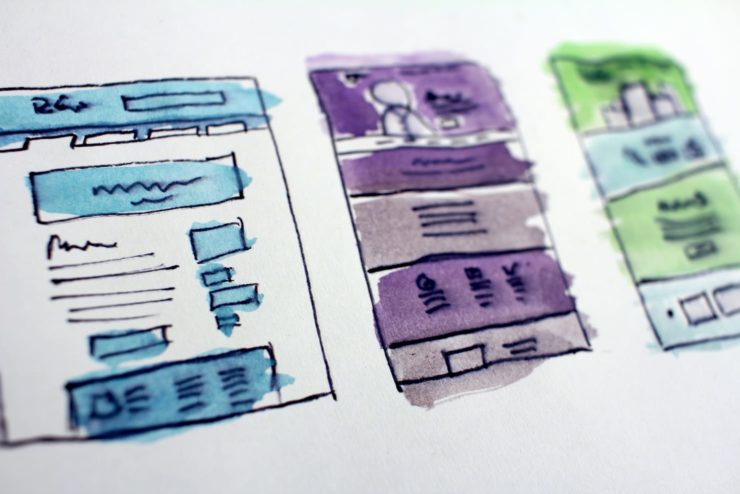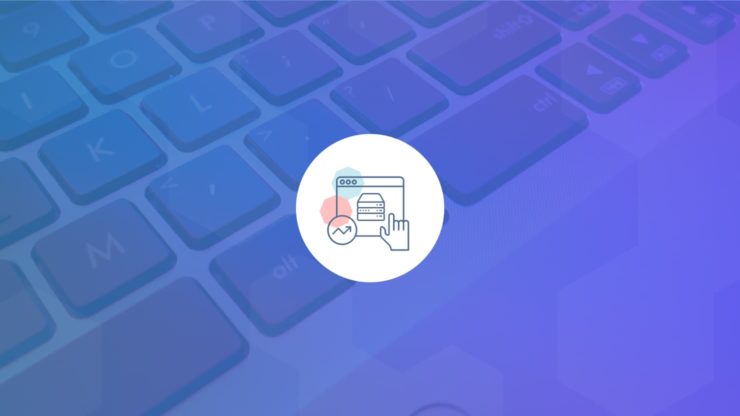So you need your website to attract and increase all the right customers to your site?
Depending on your goals as a business, your websites’ needs will vary. This is something we’ve learnt while working with many of our diverse clients. Each website we develop is custom-designed and encapsulates the brand’s essence to appeal to customers.
Most people think you have to sacrifice one to get the other. It is sometimes true, but not always. This tug-of-war debate will help guide your online strategy and make your website easily stand out from the competition.

Website design
Website design is integral to encapsulate your brand image. If you don’t visually reel in your prospects, they will struggle to interact and engage with your site. Your website is the first thing future customers see.
It will be what they remember you as. Whether that is having good quality imagery, showing up to date content, or having an easy to navigate layout – your audience will notice.
Being outdated isn’t trendy
If your website looks outdated, customers will be wary of the quality of your products. They will be less inclined to make the final step in purchasing or giving out their information.
Customers want to feel as though they are up with the trends. Feeling as though they are making the right decision comes from the visual aspect of your website.
Show what you do and show it well
If you’re selling visuals as a business, it’s a no-brainer to show your videos and images upfront and centre in the highest quality possible. Along with speed and user experience, few people want to click on an embedded link to open the video in another tab.
As a business, aim to streamline the user experience and help your customers do as little as possible. It will, in a way, save their energy for buying your product.
Navigation is Key
Navigation does tie into performance, but it’s also about the design and how easy it is to click through the website. Continuously clicking from page to page is not a good sign for SEO.
Your audience will enjoy a well-designed and easy to navigate page. Subheadings, related imagery, navigational links, and consistency will make perusing your website easy. By retaining the customers’ attention for longer, you can show them they’re on the right website and direct them to your CTA.

Performance
Focussing on high-quality imagery may hinder the speed and functionality of your website and even your SEO strategy. When investing in building a website that encapsulates your brand, you might as well make it the best it can be.
We have three reasons to improve your website’s performance and why it’s imperative for your business.
Need for Speed
The load time of your website affects your reputation, revenue, and SEO. Your HTML load speed is one of the most integral ranking factors. Decreasing load time will positively impact user experience and will increase your conversion rates.
Do you remember when Amazon shared their website’s results? Every time they improved their speed by a couple of milliseconds, they increased their revenue by 1%? Amazon is a prime example of a successful website that focuses primarily on performance.
The design comes from the consistent performance and satisfaction of their loyal customers. Overall, page speed is integral for inbound marketing success.
Ranking in search engine results
We’ve said it once, and we’ll say it again: this is the dirty little secret most SEO gurus will never tell you. You can increase your rank in search engine results by more than just pumping out keyword specific articles.
You can even improve your ranking from your website development. Technical optimisation, performance, and user experience all help to aid your SEO strategy. With a fast-loading, secure and reliable website, users can engage with your business.
Don’t forget your CTAs
Do you remember hearing ‘mind your P’s n’ Q’s’ from your parents growing up? Well, next time you think of forgetting your CTA’s, remember us reminding you.
Many people forget to include a clear call to action when focussing primarily on design. Having a big sign up now button may not be the most visually appealing. But the goal of your website is to generate leads and drive sales.
You must not forget your call to action in the design process. We come across beautiful websites that promote their work, although it can sometimes feel like a portfolio to customers. That isn’t always an issue, but it is necessary to focus on generating leads and showing a clear call to action.
Conclusion
It is possible to design a website that looks spectacular and performs efficiently. Driving sales doesn’t have to be one or the other. There will always be certain sacrifices you’ll have to make.
Sometimes we sacrifice design for its performance, and sometimes we prioritise performance over design. What is important is understanding when to prioritise what and how you can still create the perfect website.
Listen In
Listen in to James and Joesph and their big debate to see what will increase traffic to your website: Design Vs. Performance. We would love to know who you agree with within the comments below.
Transcript
James:
Hello everyone, and welcome to another episode of the Web3 Marketing Debate Show. We’ve got another firecracker of an episode today. What’s better?
Is it having a nice, really awesome, beautiful, pretty website that is the benchmark of design?
Or is it better to have more of a stripped-down, not as well designed website, but it performs like a bat out of hell? So I’ll be taking the website design side of this debate.
Joseph:
I’ll be taking the website performance side. So let’s get stuck into it.
James:
Awesome. All right, let’s get started. So, all right, Joseph, performance. Why do you want to have a high-performing site as opposed to one that looks like it’s the Mona Lisa of websites?
Joseph:
It’s funny you say that because you can actually have a nice website and it can be good at performance. There are times we’ve seen nice websites, but are absolutely trash when it comes to performance.
You need a high-performing website that loads quickly converts customers, and is a true asset to your business. It’s super important to have a high-performing website.
Now, performance doesn’t come out of the box. You do need to tune your website to be performing. Take our website, for example. I would say our website looks quite spectacular, but it’s been tuned and built for performance.
The results show when you have a high performing website, the ROI and results you get from the website are night and day. Whereas, if you just have a nice-looking website, chances are you’re losing a lot of traffic and performance that your business deserves. So James, tell me why design’s better than performance.
James:
Well, I’m a videographer and have some fantastic 4k high-resolution films that I want to show. I want to have people when they land on my website, to see my video and the high-resolution, detailed work. I don’t want to have them click through to some embedded YouTube play. I want them to see it as soon as they load.
It might take a bit of a performance hit, but it allows me to immediately engage my audience with the work in which I do.
Why can’t I have that, Joseph? You’re a developer. You know that it’s a trade-off.
Performance means sacrificing one or either or at some stage. Why can’t I be able to achieve the design that I want? Why do I have to make sacrifices when it doesn’t make sense for my business to do so, or my audience?
Joseph:
Well, the thing is, you don’t need to make a huge sacrifice in instances like that. There are techniques that you need to use for video to make sure that your website performs how it should.
You can have videos and a pretty website. But out of the box, (particularly on a lot of WordPress themes that buy from marketplaces) are trash when it comes to performance but look nice.
At the end of the day, your website is an asset and needs the best performance it can for the best ROI for your business.
James:
Well, you could load a straight HTML document with a couple of words on it and call it your website. But it’s all black and white. If your audience lands on a website like that, they’re going to have a pretty poor impression of your business.
It will look like you’ve half-assed it.
It could be the fastest loading site in the world. But if there is no design, there’s no professionalism in the brand presence. It doesn’t matter how well-performing it is.
You’re going to lose your audience. You’re going to lose the purpose of why this thing exists. Your purpose is to engage your audience and inform them about what you do. This will encourage them to take a positive action towards achieving the objectives of your business online. So what do you have to say to that, Joe?
Joseph:
A good example of performance over design is Amazon. They’ve got some design, but it isn’t the core of what they do. Their core is making money and growing their business, focusing heavily on performance.
They did a study (I can’t remember the exact numbers), where they lost millions of dollars because the speed was off by a millisecond. This was a hugely critical aspect of their business.
By the way, your website doesn’t need to be just black and white text on the page. You can have a nice design and performs well. But performance has to actually be part of the plan of the website.
It can’t be something that you think of afterwards.
Otherwise, you then have to re-engineer certain parts to make sure that it is performing. Website performance is incredibly valuable and you can have both. It comes down to how much you want to sacrifice.
James:
That was well said. This underlines the importance of what a professional web design agency should do for you. Because it’s actually not a debate of design versus performance.
Do you want to have a nice design or do you want to have a site that loads fast? No, you can actually have a beautiful, well-designed website that performs and loads quickly if you know what you’re doing. And this isn’t something that is done once the website has been built or while it’s being built.
This goes down to the fundamental planning aspects.
That’s the website strategy for you to be able to create a website that’s visually appealing to your audience. But also performs and produces a result for your business. This is something that is a skill. This takes experience. This takes know-how in how to do this well.
A lot of websites that have been DIY’d, or businesses that come to us with sites that look good but perform terribly is because of what they haven’t considered. They’ve looked at it purely from a design-only angle. They haven’t considered the performance angle.
Or you get very fast loading websites that look terrible because they typically have good development capability, but terrible design capability, which also then misses the mark.
You can have both, and this is what we do at Web3. We have both design and development talent in-house. This allows us to bring both worlds together and create something that works the best in both worlds for our clients and our customers.
So that’s another episode of the Web3 Marketing Debate Show. As always, I hope you learned something new and we’ll be back soon with another debate around creativity versus data.
I can’t wait to announce this one and yes, rumble in the ring with you, Joseph.
Joseph:
Can’t wait. Bring it on, James.
James:
Awesome. All right. That’s a wrap. We’ll see you again real soon.
And that’s a wrap for this episode of the Marketing Debate show. If you liked it, please give us a positive rating on your preferred podcasting platform.
Here are the most recent previous episodes:
- Brand Awareness Vs. Lead Generation: What delivers the best result for your marketing investment?
- Data-Driven Vs. Creative Marketing: What is more beneficial for your business?
- Content Vs Design: Which One is More Valuable for Your Business?
And here’s the very next episode: Premium Vs. Shared Hosting: Which is better for your marketing efforts?



